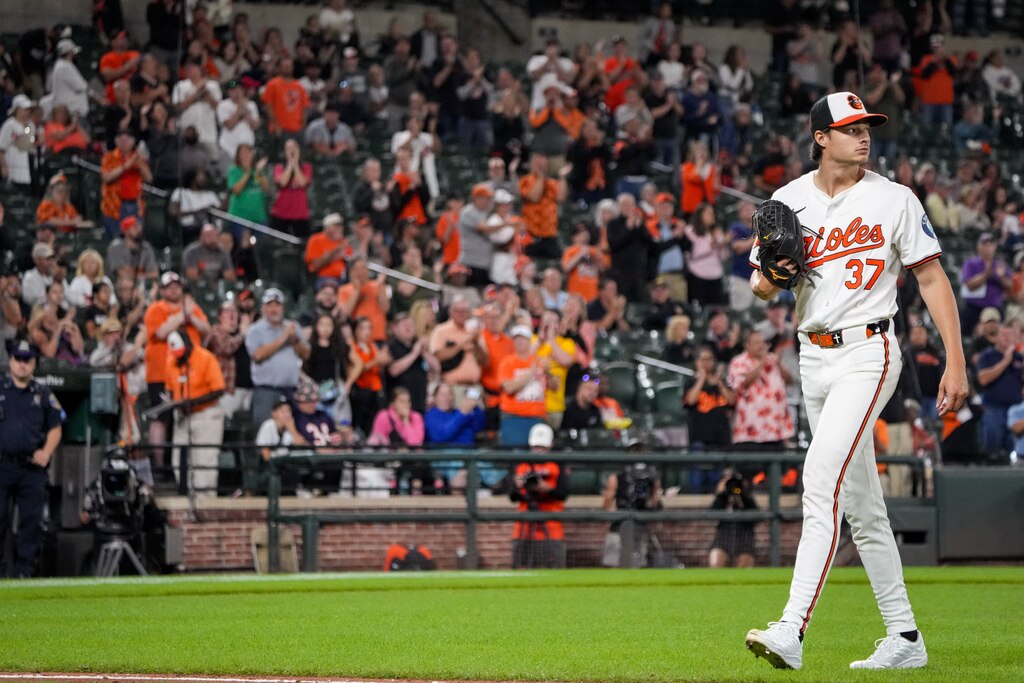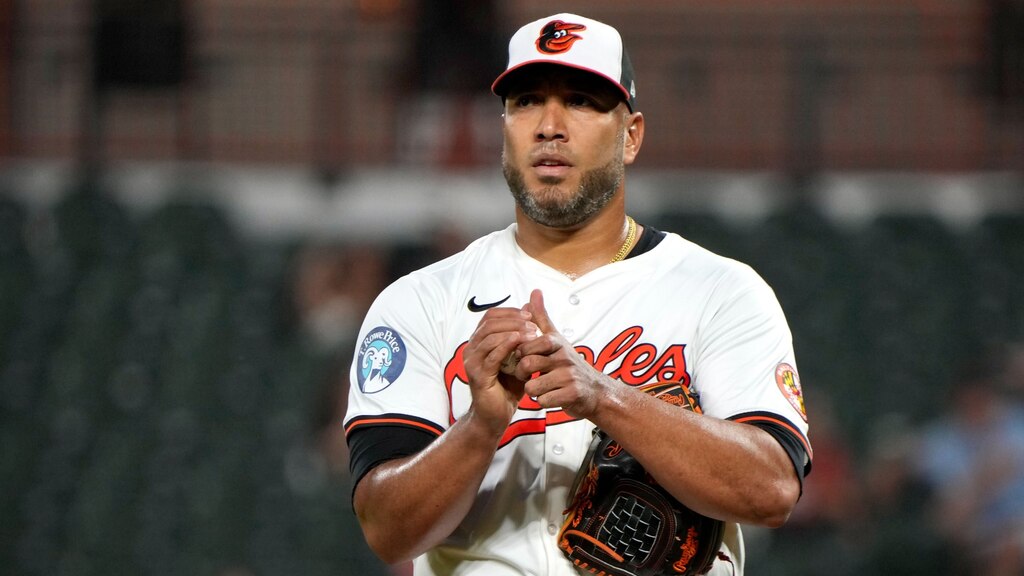Injuries will hang over the Orioles’ pitching staff this winter, as will the potential departure of Corbin Burnes.
But to say the team needs to solidify that area of the roster in the offseason means a completely different thing than last winter, considering the context. Last year, the Orioles pitched well all year long and were deficient in October.
This year, they allowed three runs in two postseason games and, somehow, against a backdrop of all the injuries that came to define the team’s season, were just as good overall as a staff as they were last year.
We still are not at the point of feeling good about anything involving the 2024 Orioles but, ready to move on or not, that’s an aspect worth recognizing.
If you stack up the Orioles’ overall pitching stats for the last three seasons, the similarities are striking, even if what we’ll remember about those staffs is different. In 2022, the Orioles assembled a dominant bullpen and had particularly strong second halves in the rotation from Kyle Bradish and Dean Kremer.
That staff had a 3.97 ERA, a 3.97 FIP (fielding-independent pitching, which approximates ERA based on factors a pitcher can control: strikeouts, walks and home runs) and a 4.10 xFIP (which substitutes the league-average home run rate into the FIP formula as opposed to a pitcher’s actual one).
Read More
Last year was more of the same, with the group relatively healthy all year. It ended with a 3.91 ERA, a 3.98 FIP and a 4.08 xFIP. We know all that happened with this year’s staff.
Félix Bautista never threw a pitch for this team, and his replacement, Craig Kimbrel, ended up potentially pitching himself out of the Hall of Fame with his second-half collapse.
Yennier Cano, an All-Star out of the bullpen alongside Bautista a season ago, wasn’t the same pitcher, though he wasn’t necessarily bad.
The rotation was hardly what it was expected to be either. Bradish never really got the chance to build on last year’s breakout season due to an elbow injury that limited him to 39 1/3 innings before requiring surgery. John Means’ comeback was cut short by further issues with his elbow as well.
Yet the 3.77 ERA the rotation put up was fifth-best in baseball, and with a FIP of 3.98 and a xFIP of 4.08, the actual results may have flattered them some but didn’t take away from the strength the group demonstrated. For comparison’s sake, last year’s rotation had a 4.14 ERA with a 4.25 FIP and a 4.16 xFIP.
The only Orioles rotation this century with a better ERA was the 2014 version, which had a 3.61 ERA, albeit with worse underlying numbers (a 4.18 FIP and a 4.12 xFIP).

Most of that comes down to Corbin Burnes, who had a 2.92 ERA. He was a bit worse by expected numbers, but by any measure he was still every bit the ace the Orioles acquired him to be. Bradish and Means had sub-3.00 ERAs in their eight and four starts, respectively, while trade deadline acquisition Zach Eflin had a 2.60 ERA — albeit with a 3.94 FIP and a 3.79 xFIP — in nine starts with the Orioles.
Albert Suárez and Kremer made 24 starts apiece with 3.76 and 4.10 ERAs, respectively. Even if there was some outperformance in there, Kremer has done that for three seasons running, so it’s hard to feel that’s a fluke.
While most of the attention will be on how the Orioles address an offense that fell off in the second half, they’ll have interesting conversations about the complexion of their rotation and overall staff next year. Grayson Rodriguez is expected to be healthy to retake a prominent role in the rotation alongside Eflin, with Kremer and Suárez likely in that mix as well.
Given Cade Povich finished with a 2.60 ERA and struck out 10.41 batters per nine in the last month, he’ll be expected to compete for a rotation spot in the spring. Chayce McDermott and Brandon Young, both of whom pitched well at Triple-A Norfolk, could be counted on as rotation depth as well, with the potential for Bradish and Tyler Wells to return midseason or thereabouts.
That’s a lot of quality but, with Burnes a pending free agent, leaves a bit of a gap at the top, given the injury questions. The Orioles could seek a top-end arm to replace him in free agency or try to acquire another in a trade. But with Eflin, potential reclamation project Trevor Rogers and relievers Seranthony Domínguez and Gregory Soto, it should be said that the Orioles’ pitching staff was pretty well reinforced at the trade deadline. Considering the staff had an ERA just shy of 5.00 in July, it needed it.
Overall, the transition away from Chris Holt and Darren Holmes on the coaching staff to new pitching coach Drew French and assistant pitching coach Mitch Plassmeyer, with pitching strategy coach Ryan Klimek the holdover, feels like it was a success with plenty of room to grow.
Manager Brandon Hyde said last week that the new coaches on the pitching staff were “absolutely fantastic.”
“With the rash of pitching injuries that we had, with the bullpen kind of in flux, with Craig and the first half he had and then us going in a different direction and having to piece things together on a nightly basis without set roles, losing a lot of our rotation — I thought they did a great, great job,” Hyde said.




Comments
Welcome to The Banner's subscriber-only commenting community. Please review our community guidelines.